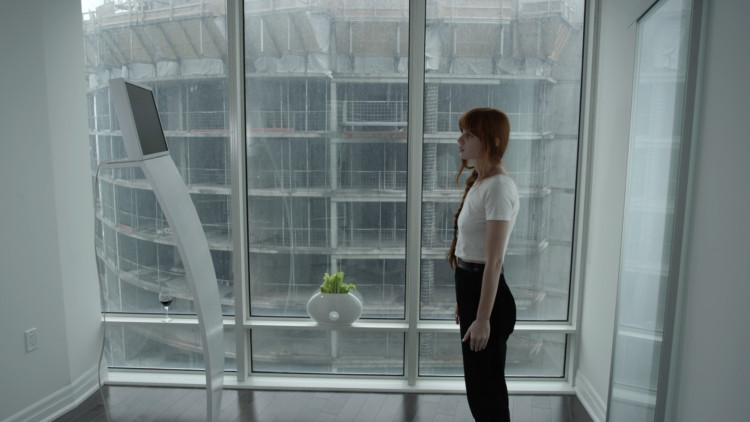We are pleased to announce that Aden Solway is the recipient of the 2022 The Researcher Is Present position. This will allow full support for his research project through the videos and printed material at Vtape throughout the first months of 2022, culminating in a project – as yet unspecified – to be presented at a later date. He describes his interest in working with Vtape as follows:
“Media art, traversing many different genres and contexts, has drawn increasing interest within the field of curation, both as an subject of inquiry and as an emissary of change. While scholars have provided accounts on how the moving image came to occupy the museum, the purpose of my research is twofold: to analyze how the ascent of moving-image practices influenced various disciplines within the museum; and to explore key works of moving-image art which responded both to the museum as a site (site-responsive) and to their own history as a medium (self-critical). This is a subject that warrants greater address as it offers a new perspective on how the moving-image operates within, against and in service to the museum.
“There is, I posit, an enduring romance between history, ideology and media playing out in the domain of the museum. Such a romance is on congenial terms with the discipline of curation, which gives presence to these interactions at a given historical moment.
“Thus the proposed research project will analyze the exhibition of film, video and new media within the museum – and auxiliary sites – in understanding its influence on curation, museology and the broader cultural field. Emphasis will be placed on contemporary artists (Thirza Cutland, Geoffrey Pugen, Coco Fusco, Rehab Nazzal and others) working within the language of media to develop work that is: site-responsive, taking cue from the spatial and epistemic context of the museum; and self–critical, engaging in forms of critique that are conversant with, and in relation to, its own history as a medium. Guided by theoretical models conceptualized by scholars of film (Michael Renov, Trinh T. Minh-Ha, Erika Balsom), visuality (Gilles Deleuze, Clement Greenberg, Fredric ]Jameson), comparative media (Shu-Mei Shih, Yuk Hui, Laura Mulvey) and museology (Claire Bishop, Andrew Dewdney, David Joselit), I will engage in a longue durée analysis of the moving-image’s influence in the museum, tracing key exhibitions and singular works that furnished the basis for new modalities of artistic practice.
“Through this research, I will provide textured analysis on the museum’s dispositif. That is, in the Foucauldian sense, the laws, theories of curation, conventions, moral propositions and values that are immanent in the practice of ‘exhibiting media.’ In this, I will consider the transformations that have taken place within the museum and their impact on curation at large. Indeed, the tradition of moving image arts has continued to inspire new visions of art and collaboration, destabilizing traditional models of museology. In witness to these shifts, one must proffer the question: how does the exhibition of film, video and new media within the museum bring new concerns to the work of curation and museology? My research will attend to this question and position it within broader theoretical discourses.”
Aden Solway is an artist and curator based in Toronto, Ontario. Trained as a historian, they have held positions across three continents, contributing to projects led by The Art Gallery Of Ontario (AGO), Scotiabank Contact Festival, The Whitney Museum of American Art, Princeton University, The Art Institute of Chicago and York University. Over the last decade, they have maintained residency and fellowship positions at Banff Center for Arts and Creativity (Canada), Museum of Contemporary Art (Toronto) and Cornell University (NYC). Presently, they serve as a Harding Distinguished Scholar at the University of Cambridge (UK) studying the collection, exhibition and publication of time-based arts within diverse contexts.
Image credit: White Condo, Geoffrey Pugen, 2015

